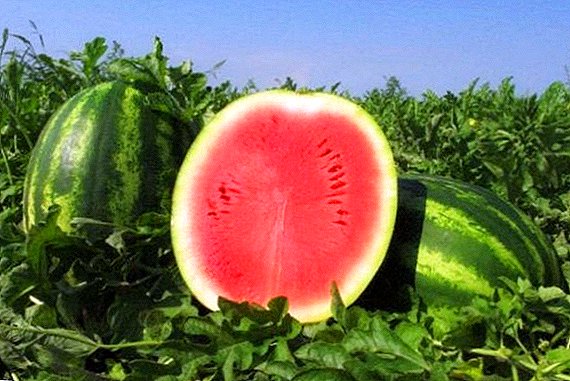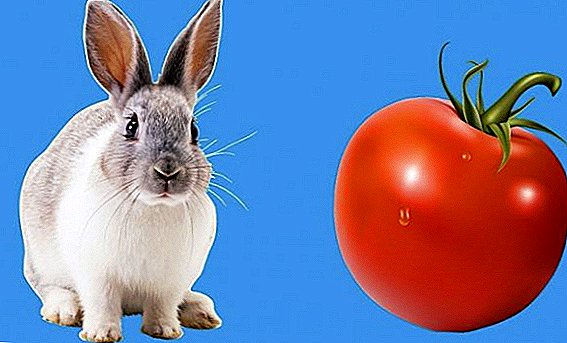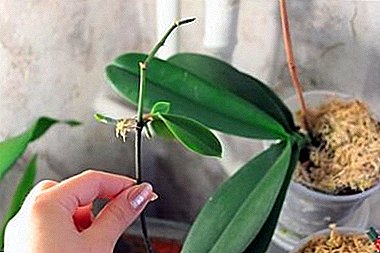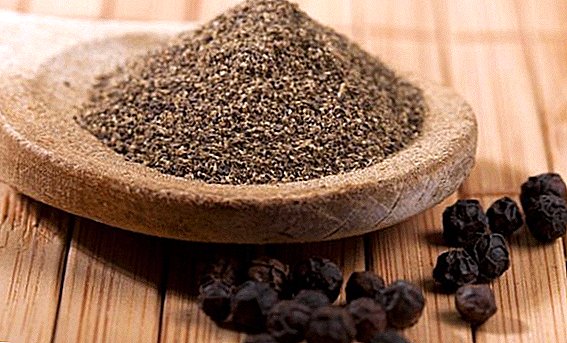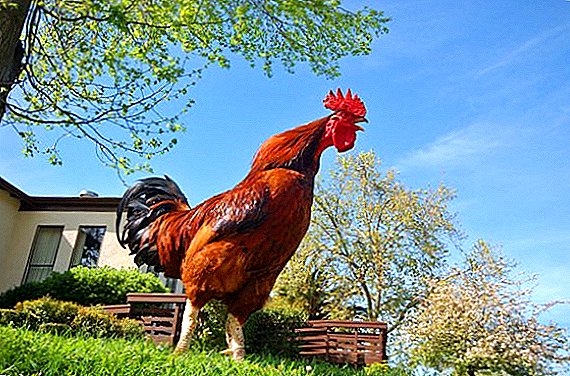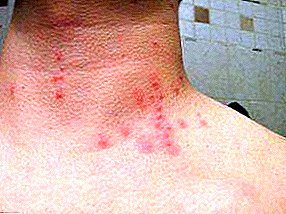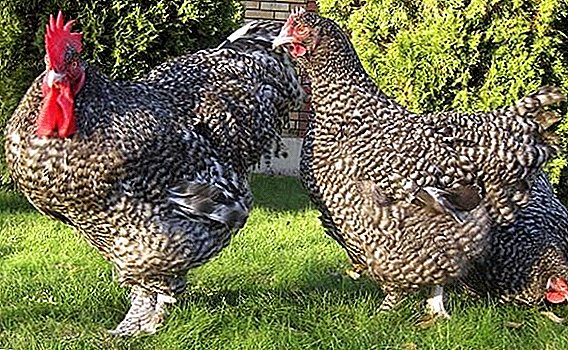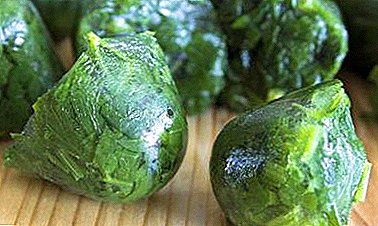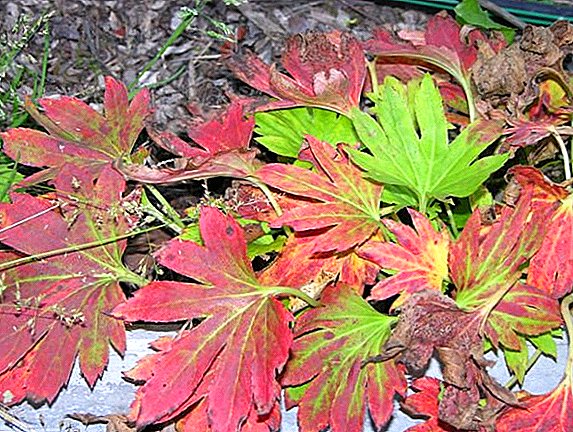 To create a unique landscape design on your site is no longer necessary to have a specialized education - the range of different cultures is so wide and information about them is so accessible. The literary image of the “wall covered with ivy” lives especially firmly in our imagination - hence the craving for creeping and “carpet” plants. We will talk about one of such interesting types of ground covers in this article - about mukdenii. Simple and elegant, this plant is increasingly conquering the hearts of domestic gardeners.
To create a unique landscape design on your site is no longer necessary to have a specialized education - the range of different cultures is so wide and information about them is so accessible. The literary image of the “wall covered with ivy” lives especially firmly in our imagination - hence the craving for creeping and “carpet” plants. We will talk about one of such interesting types of ground covers in this article - about mukdenii. Simple and elegant, this plant is increasingly conquering the hearts of domestic gardeners.
Botanical description
The perennial ornamental plant Mukdenia owes its name to the ancient Manchu city of Mukden (now Shenyang). The people got accustomed to its second name - the maple leaf, because its slightly pointed leaves really can be taken from a distance for a heap of maple leaves that covered the garden. The plant refers to covering, carpeting the soil. It has a thick, shallow rhizome with a scaly covering.  The stems are completely absent - the leaves form dense rosettes, rising straight from the root. Rapid growth and reproduction lead to the fact that a real maple-leaf carpet appears in the garden, and it is incredibly beautiful. Moreover, the color of the leaves changes throughout the season, changing the color of the "carpet": from rich green to crimson and crimson.
The stems are completely absent - the leaves form dense rosettes, rising straight from the root. Rapid growth and reproduction lead to the fact that a real maple-leaf carpet appears in the garden, and it is incredibly beautiful. Moreover, the color of the leaves changes throughout the season, changing the color of the "carpet": from rich green to crimson and crimson.
Did you know? The largest flower of our planet grows on about. Sumatra. Rafflesia Arnold not only reaches 90 cm in diameter, but weighs over 10 kg!Large leaves (30-40 cm) seem to have nine fingers: their tips are divided into 9 (sometimes slightly smaller) sectors and have a diamond shape. Small white and soft cream flowers bloom on mukdenii simultaneously with the leaves, and even earlier. The buds are panicles: a lot of them gather on a long half-meter foot. When the flowering period is over, a seed box appears immediately.
Ornamental herbaceous plants also include phloxes, clematis, crocus, hibiscus, allium, acanthus, hymenocallis, geicher, asphodel, peltifillum, veronikastrum, dizygotek and medunitsu.
Distribution and habitat
Under natural conditions, the plant can be found in tropical and subtropical forests, as well as in eastern Asia. In Russian gardens it is rarely possible to observe mukion, since it is very sensitive to cold and only in rare cases does it experience a frosty winter. Sometimes even special shelters in the form of a fallen dead tree in advance do not help. Despite this, many gardeners love the plant for its unique coloring, and are happy to place mukdenii in their front gardens. 
Mukdenia varieties
The genus Mukdenia is rich in only two main species: the Ross mukdenia and the acantolian. The first species is considered to come from China, but in Russia it is planted with gardens much more often. Combines both kinds of love for shaded places.
Treeline hydrangea, serpentine, pennisetum and primula are also considered to come from China.
Ross Mukdenia. The height of an adult bush is from 20 to 40 cm. In spring, half-meter flower stalks are crowned with inflorescences, collected from small buds-bells. The leaves have a smooth, rounded shape and a shade of bronze. This type of perennial has an average resistance to frost.
Popular varieties:
- "Karasuba" - the whole beauty of the variety is that the leaves have a basic dark green color with a bright burgundy or crimson border; The color of the plant becomes particularly expressive in the fall. This variety is the most common.
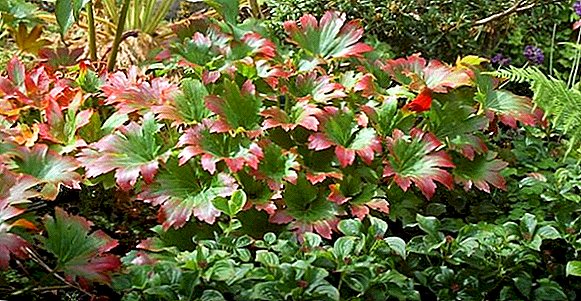
- "Nova Flame" - A hybrid variety whose leaves have a glossy shine and bright red edging, as well as crimson flowers.

Did you know? Another name for the variety "Karasuba" is "Crimson Fans", that is, "crimson fan". This designation accurately reflects the appearance of the plant.
Mukdenia acantholist. It is this species that changes its color over the season, moving from green to purple. Korea is its birthplace, and our plant has a hard time - because of its low frost resistance, it is planted as an annual.
Use in landscape design
Plants that cover the soil are very useful for any garden. They perform the following functions:
- moisture retention in the ground;
- protection of root systems of neighboring plants from direct sunlight;
- natural soil mulching between large plants.

Growing and caring for plants
Mukdenia - unpretentious plant. He loves shade and moisture, responds with rapid growth to good feeding and mulching. Therefore, observing simple recommendations, you can always count on a luxurious curtain of leaves moving from dark green to rich purple. In fact, the entire agricultural technology comes down to maintaining the moisture regime.
Conditions of detention
For good growth maple leaves need penumbra from trees or tall shrubs. Based on the landscape design, it is quite acceptable to simply plant the plant among the higher peers. Be sure to arrange drainage. Best of all is a broken brick, on top of which it is necessary to lay a layer of river clay. This will help keep moisture in the soil longer.
Learn how to do drainage at the dacha.
Soil and fertilizer
Acidic loamy or sandy soils with deep drainage are best suited for the Karasuba mukdenia. Bottom soil should be mulched for better oxygenation and moisture retention.  Woody bark. Fertilizing the flour is best with peat and bark. Before planting, the whole area must be dug up and fertilized (a compost bucket per square meter of land).
Woody bark. Fertilizing the flour is best with peat and bark. Before planting, the whole area must be dug up and fertilized (a compost bucket per square meter of land).
Watering and moisture
Regular watering is absolutely necessary. Even the slightest drying of the earth can start the processes of wilting and destruction of the shrub. But it is also important that the water does not stagnate, so you should always have good soil drainage.
Important! Drainage must go in combination with a moisture-retaining layer.
Relation to temperature
It is impossible to give an accurate and unambiguous recipe regarding the temperature regime of growing a klenolistnika. It all depends on the climatic conditions of your region. For example, in the south of the Urals, you can try to grow a bush as an annual, carefully mulching the landing site before the onset of the first frost. If the winters in your region are harsh, you will have to dig up the bushes and put them in a cool basement or cellar. 
Plant reproduction and planting
Mukdenia does not require rejuvenation and does not like transplants, so there is no need for frequent intervention in the natural growth processes.
Seeds
Seed propagation is the easiest and not time consuming way. It is only important to purchase fresh seeds.
- In March-April, seedlings are sown, so mukdeniya will be full of forces to land in open ground.
- For seedlings, the composition of the soil is as follows: take three parts of leafy land along one part of peat, humus and sand.
- The depth of the seed is about 1 cm.
- Once the seeds are in the ground, the boxes must be put in a cool place for a while.
- Soil needs regular watering (drying and cracking of the earth is not allowed).
- The first shoots can be expected after three weeks; After waiting a few more weeks, you can start picking.
- In mid-May, the plants will be ready for planting in open ground (provided there is no threat of late frosts).

Vegetative
This breeding option is needed when the perennial is well caught and has grown too much, threatening to lose its unique decorative effect.
- In early spring, during transplantation, the bushes are dug up, the roots are cleared from the ground.
- Then the spine is divided into several parts and each of them is subjected to a thorough inspection: whether there are any damaged areas, at least one “sleeping” kidney is present.
- Planting plots need kidney up, otherwise the root will not take root.
Important! Do not allow flowering mukdenii until it is planted in open ground. Therefore, flower stalks that appeared prematurely are immediately removed.There is no need to divide the roots more than once every 3 years. Perennial not so quickly creates a curtain and frequent transplants can be stressful for the plant.
Features of care, depending on the place of detention
If you grow a maple leaf in a small greenhouse, then after planting the seedlings in the ground it is necessary to maintain the correct microclimate in it: air regularly and constantly moisten the ground.  When planting seedlings in the hole must put fertilizer - for example, humus, compost or peat. After that, the bush is well watered, then left alone for a few days, so that the root system is firmly rooted. After this time the mode of regular abundant watering is established.
When planting seedlings in the hole must put fertilizer - for example, humus, compost or peat. After that, the bush is well watered, then left alone for a few days, so that the root system is firmly rooted. After this time the mode of regular abundant watering is established.
Possible difficulties in growing
As mentioned above, the main difficulty in the cultivation of perennial mukdenii is its low frost resistance, which is associated with a number of additional measures to protect the plant. For example, they dig it up and store it in a cool place all winter, or mulch it with peat before frosts and cover it with a thick layer of branches, or even plant it as an annual. You have to decide what to do, based on the characteristics of your region and personal observations.
Gravilat and barberry also have low frost resistance.
Pests, diseases and prevention
Mukdenia is resistant to various diseases and does not require preventive spraying against pests. The only threat can be slugs. They are best collected manually if they appear. A beautiful plant, unpretentious and bright, which will turn your garden into a piece of subtropical forest - this is what Karasuba Mukdenia is. May it not always be able to put up with our climate, but make a little effort and you will get amazing compositions based on this perennial.  Slug.
Slug.




